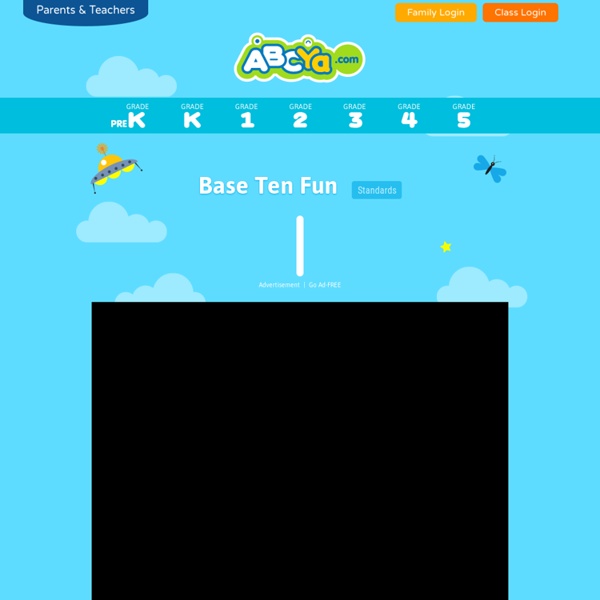Base Ten Fun - Learning Place Value
ABCya is the leader in free educational computer games and mobile apps for kids. The innovation of a grade school teacher, ABCya is an award-winning destination for elementary students that offers hundreds of fun, engaging learning activities. Millions of kids, parents, and teachers visit ABCya.com each month, playing over 1 billion games last year. Apple, The New York Times, USA Today, Parents Magazine and Scholastic, to name just a few, have featured ABCya’s popular educational games. ABCya’s award-winning Preschool computer games and apps are conceived and realized under the direction of a certified technology education teacher, and have been trusted by parents and teachers for ten years. Our educational games are easy to use and classroom friendly, with a focus on the alphabet, numbers, shapes, storybooks, art, music, holidays and much more!
Using LEGO to Build Math Concepts
I was not one of those LEGO® kids growing up. Sure, my brothers had LEGO bricks, and every so often I’d kidnap some tiny LEGO men for a make-believe game. But I didn’t truly appreciate the engineering capacity of those studded plastic bricks. As an adult, I’ve come to appreciate LEGO, both for its rectilinear aesthetic, and even more so, for its mathematical might. Chances are that if you are a parent or teacher, you already know, at least in theory, that these sturdy plastic blocks have huge intrinsic educational value. Let’s face it though – many elementary school teachers are women who, like me, did not grow up as LEGO experts. For younger mathematicians, composing and decomposing numbers is a key component of building the number sense needed for arithmetic operations. LEGO bricks are awesome for part-part-total explorations! Having a collection of LEGO pieces on hand during multiplication lessons is so useful. Fractions always seem to trip up my students. {*style:<b> </b>*} </b>*}
Busy marking!
It’s been a busy weekend marking mock examination papers! So this week I thought I would simply highlight some resources I have mentioned on my other blogs and mention a couple of recent discoveries. Have you tried Rogo? On the Starters blog I have included Jonathan Hall’s excellent Flash Maths site. On Mathematics for Students I recently linked to some Polar Coordinates resources at the request of my Year 13 Further Mathematics students. I recently wrote about Jeffrey Ventrella’s rather beautiful composite number tree. Other recent discoveries include the ability to graph Maclaurin series with the outstanding Desmos graphing calculator and Symbolab with which you can search for scientific equations. I’ll finish with a TES resource shout out, I shall be trying Craig Barton’s rather nice little starter on algebraic misconceptions on Tuesday with Year 8! Like this: Like Loading... Related Recently I have used... In "Mathematics" Thoughts This Week...
Math Processing Breakdowns * The Yale Center for Dyslexia
Processing Breakdowns Students with slower processing speeds or executive-function problems are often no different from their peers in math proficiency in first and second grade; but as they confront multistep computations in upper elementary school tests, their scores tumble because they lack the skills necessary to produce organized, efficient output. These students aren’t losing their earlier skill base. Woodin: An individual student can process auditory, visual information, and produce verbal and motor output with varying degrees of accuracy and at different rates. Students who have visual/spatial and handwriting problems have difficulty learning and expressing number facts. Example Strategy: Use Multimodal Strategies To Teach Multistep Division The video link provided above shows one way to tackle multistep mathematics problems. Please enable JavaScript to view the <a href=" About Chris Woodin:
Related:
Related:



